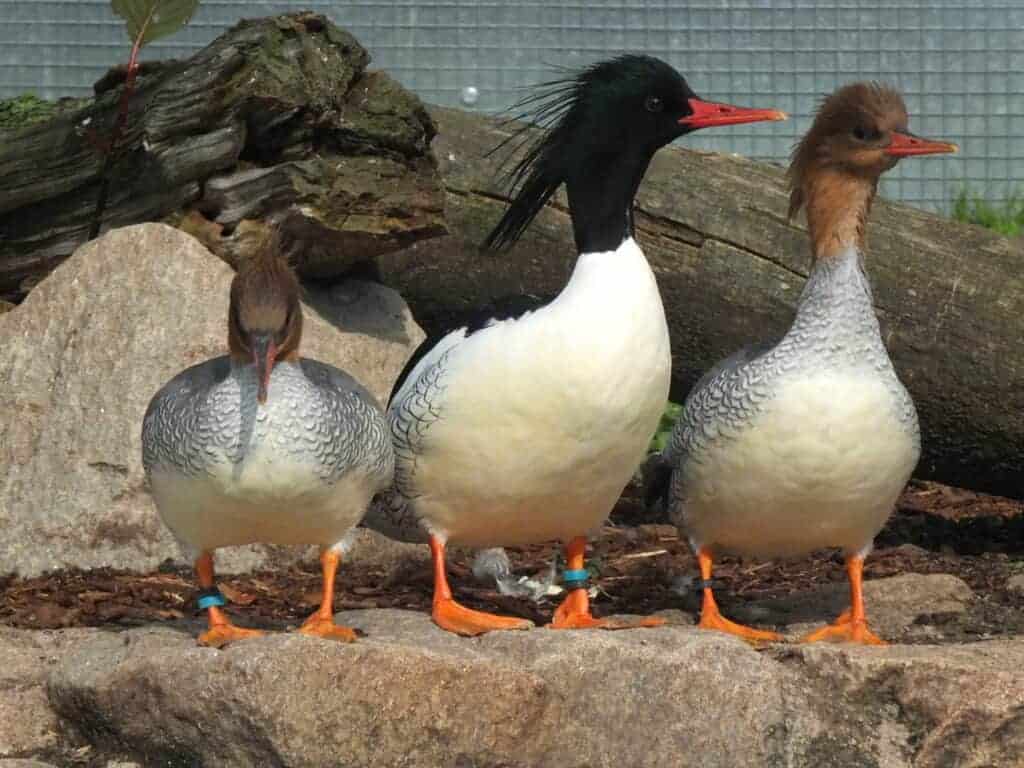Scaly-sided Merganser

Scientific Name
Mergus squamatus
Alternative Names
Chinese Merganser, Asian Scaly-sided Merganser
Measurements
| Feature | Male | Female |
|---|---|---|
| Length | 58–67 cm (23–26 in) | Slightly smaller |
| Weight | Around 1.5 kg (3.3 lb) | Around 1.3 kg (2.9 lb) |
| Wingspan | 80–94 cm (31–37 in) | 80–94 cm (31–37 in) |
Status
An endangered duck found mainly in the forests and rivers of the Russian Far East, Manchuria, and parts of China, with small numbers reaching Korea and Japan in winter.
Identification
A beautiful duck with a thin red bill, bright red eyes, and dark scaly markings on the flanks. Males have glossy black heads, white breasts, and long wispy crests, while females are grayish with buff heads and shorter crests. Both have orange-red legs.
Voice
Usually quiet, but may give soft croaks or whistles during the breeding season.
Diet
Feeds on aquatic insects, small fish, frogs, and crustaceans, often diving or picking food from riverbeds.
Distribution
Breeds along forested rivers in southeastern Russia, northeastern China, and possibly North Korea. Winters mainly in southern China, with smaller groups seen in Korea, Japan, and northern Vietnam.
Habitat
Prefers clean, clear rivers that run through mountain forests. Needs tall trees with natural hollows for nesting.
Breeding
Nests in tree holes near rivers. The female lays 6–10 eggs and incubates them alone for about a month. Chicks leave the nest soon after hatching and follow the mother to the water.
Wintering
Migrates south to warmer rivers and lakes in China and nearby countries when northern rivers freeze.
Conservation
Listed as Endangered due to forest loss, pollution, and illegal hunting. Conservation efforts include protecting river habitats, installing nest boxes, and educating local communities.
